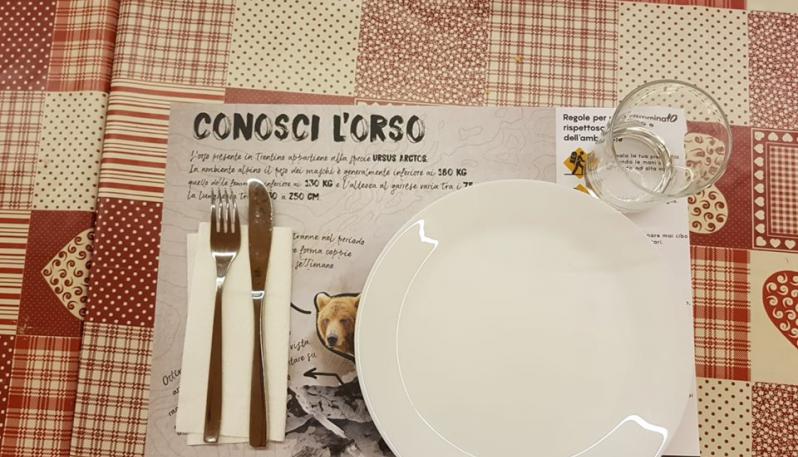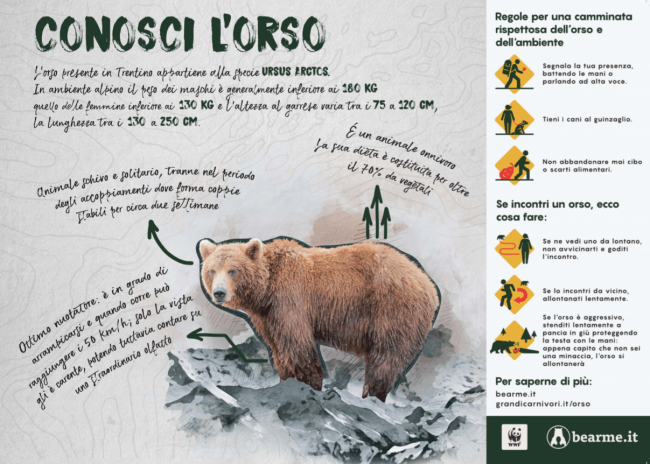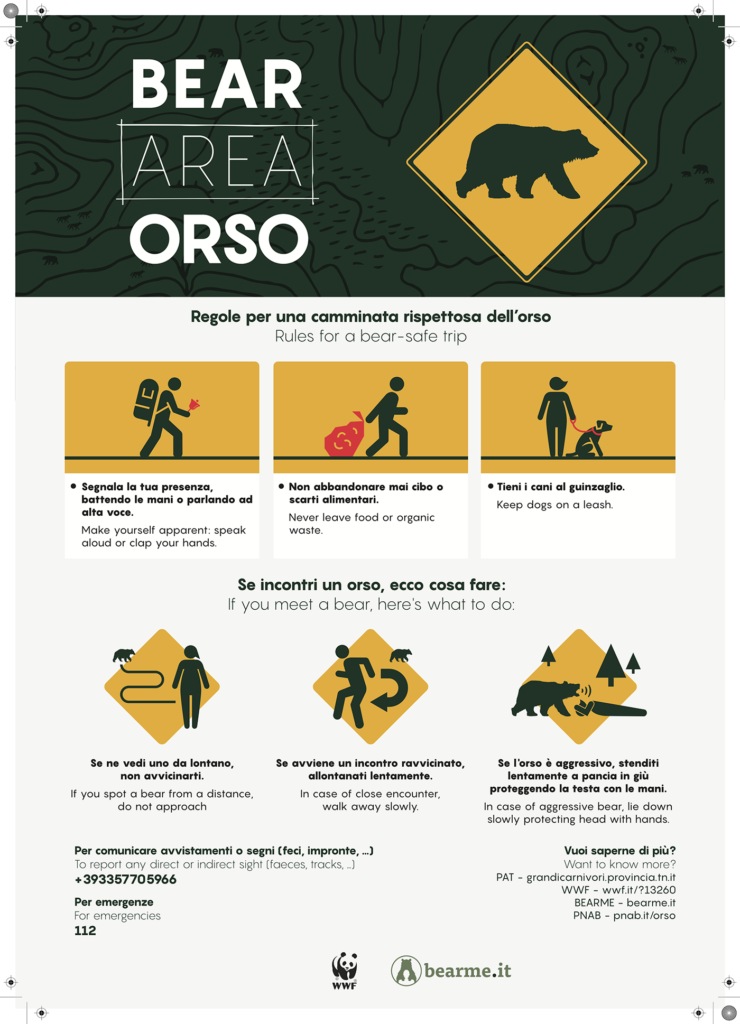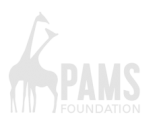Is coexisting with brown bear possible? We strongly believe it is, but fortunately we are not the only ones. Trentino (an italian alpine region) is a fundamental stronghold for the survival of brown bears in the Alps. Working on coexistence has to be a priority to ensure their conservation. This is one of the main goals the Wwf’s volunteers are pursuing. Many initiatives have been carried on, but today we want to talk about a very ambitious project based on the communication of coexistence. Indeed, it’s Wwf’s idea to produce signs and placemats to reduce people’s fears and improve their knowledge.

We asked the president of Wwf Trentino, Aaron Iemma, some questions to learn more about the project.
Hello Aaron! Would you tell us how this idea was born?
AI: The signs put up by the Autonomous Province of Trento (PAT), as useful as they are, seemed to be quite ineffective to us. We think the graphics is not eye-catching. We wanted something more accessible that could immediately pass the message. Moreover we wanted the message to be more clear also in English.
Talking about communication, what are the pros of this initiative?
AI: A placemat is something that can be spread easily and quickly to unusual places. People usually don’t get this kind of information at a restaurant table, under cutlery and glasses, waiting for a traditional dish.
About the placemat’s graphics: did you do a specific research to see what graphics were most appealing?
AI: We contacted right away Ymir Studio. They already worked on similar initiatives, and they always hit the spot. You can have a look at www.bearme.it (ed. website to promote clear and reliable information about brown bear)
How did you choose what to publish on the placemats?
AI: There’s nothing new compared to what has already been published by PAT. Many different infographic and fliers have been made already. There are simple rules that can be easily translated into graphics. They refer to standard behaviors that can help tourists-bears coexistence.
Have you thought about asking for feedback?
AI: We are just taking care of that. We want to understand better how to calibrate our work and to understand if our work has been appreciated.
In your opinion, why people ordered your placemats?
AI: Maybe some of them were just surprised when we propose them. It was something new. Moreover, it is something nice and different to offer to clients. Maybe also to show that they can communicate something that is part of their culture and their territory. We don’t want our hopes up: by now the most believable hypothesis seems to be the first one. People are attracted by something new. Our sample, however, is small for now; our forces to distribute the placemats are unfortunately limited.
What about an interactive version of the placemats? Have you thought about add questions on them, something useful for surveys?
AI: No, we haven’t, but we think it is a great idea.
If you could choose two questions to write up on the placemats, what would they be?
AI: I think that two questions are not enough. I probably would put on a QR code and I would invite people to use it to fill up a form with several questions. Questions should be quick and easy to answer, better if multiple choice questions. People should answer them before reading the info, so they don’t get influenced. Anyway, some of the questions would be the following: How much do you think you know about bear ecology? Do you know exactly how to behave? How much do you think you know about what has been done by PAT to protect brown bear? Are you a member of an environmental associasion?
Why did you choose tourists as your main target?
AI: We are aware that the most problematic complexities and interactions are with residents and not with tourist. We decided to intercept the mass of tourist to see if the acceptance by them can somehow benefit territorially.

OUR OPINION AND SUGGESTIONS
- The placemat is totally different from the classic method of communication. People do not expect to find scientific information on a placemat. This could attract the attention even more.
- A placemat is something we usually ‘work’ on while we wait for food. We fold it, sketch it, read it, play with it. Hence, we thing is a brilliant idea to write something extremely useful on it.
- It’s nice, as well as useful. People might want to take it home.
- The signs on it are clear, you understand what they want to communicate even without reading the text. This is good because they give full access to everyone.
- The main part is less accessible at a first sight but the ‘diary style’ may stimulates curiosity, specially in adults.
- One thing that could be improved is for sure the interactivity. We work on large numbers to understand what is worth focusing on, in terms of communication and management. Any idea, any opinion counts. It would be very usefull to be able to get information from people that got the placemat. The idea of a QRcode to collect data with surveys could be a great way to improve our work. We all try to find something to do while waiting for our meal specially if we are very hungry!! So, we think people would be willing to fill in a simple and nice form.

But it’s not it. As we said before also signs with ‘rules for a bear-safe trip’ have been printed. Unfortunately, bureaucracy has made it impossible to distribute signage throughout the territory. They have been just provided to the restaurants along with the placemats and taken to the tourist offices. The graphics is the same as the placemat: simple and clear even without reading.
OUR SUGGESTIONS:
- If one day they can be exposed, we suggest to print them in large size so that everyone could notice them and read it.
- They should be placed at the right high so that everyone could read them. Remember it is easier for a toll person to bend down that for a short one to stand up.
- Put the QR code on them too, so they can also help to gather informations.
- It would be great to add braille (just with the main informations like: “you are in a bear area, make sure you don’t leave food or waste; stay close to other people, and so on…” so that everyone can be and feel involved, even if probably blind people won’t be there alone.
Click here to order the placemat.
We remember that all materials are free and are distributed by Wwf’s volunteers. The project was possible tanks to the donations and volunteer’s hard work. Volunteers are always welcome!

